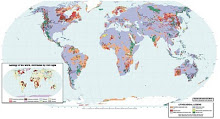Biol Trace Elem Res. 2010 Dec;137(3):289-300. Epub 2009 Dec 24.
Tan C, Chen H, Xia C.
Department of Chemistry and Chemical Engineering, Yibin University, People's Republic of China. chaotan1112@163.com
Abstract
The relationship between the mortality of leukemia and the contents of trace elements in the soils of 29 regions of China was investigated. A total of 27 elements were determined for each region. Considering that an efficient variable selection can be highly beneficial both to improve the predictive ability of the model and to greatly reduce its complexity, genetic algorithm-partial least squares was used to screen out 13 qualified elements. As a result, only 13 elements, i.e., As, Hg, Mn, Sr, Ba, Cu, Ti, Co, K, Ca, Rb, Zn, and Mg, were picked out and, a partial least squares model with three latent variables was obtained, whose prediction exhibited a correlative coefficient of 0.874 with actual mortality. Especially, it showed a high negative correlation between the content of soil As and the mortality of leukemia. Such a fact can be explained by the apoptotic effect of cancerous cells by trace-amount arsenic trioxide. Furthermore, according to whether the mortality was larger than two out of 100,000 (2 × 10⁻⁵), all the 29 regions were divided into 21 high-mortality regions and eight low-mortality regions and were assigned the label -1 or 1, respectively. Using the same 13 elements, a Fisher's discriminant analysis model was developed, which can successfully discriminate low- and high-mortality groups.
Thursday, February 17, 2011
Subscribe to:
Post Comments (Atom)




No comments:
Post a Comment